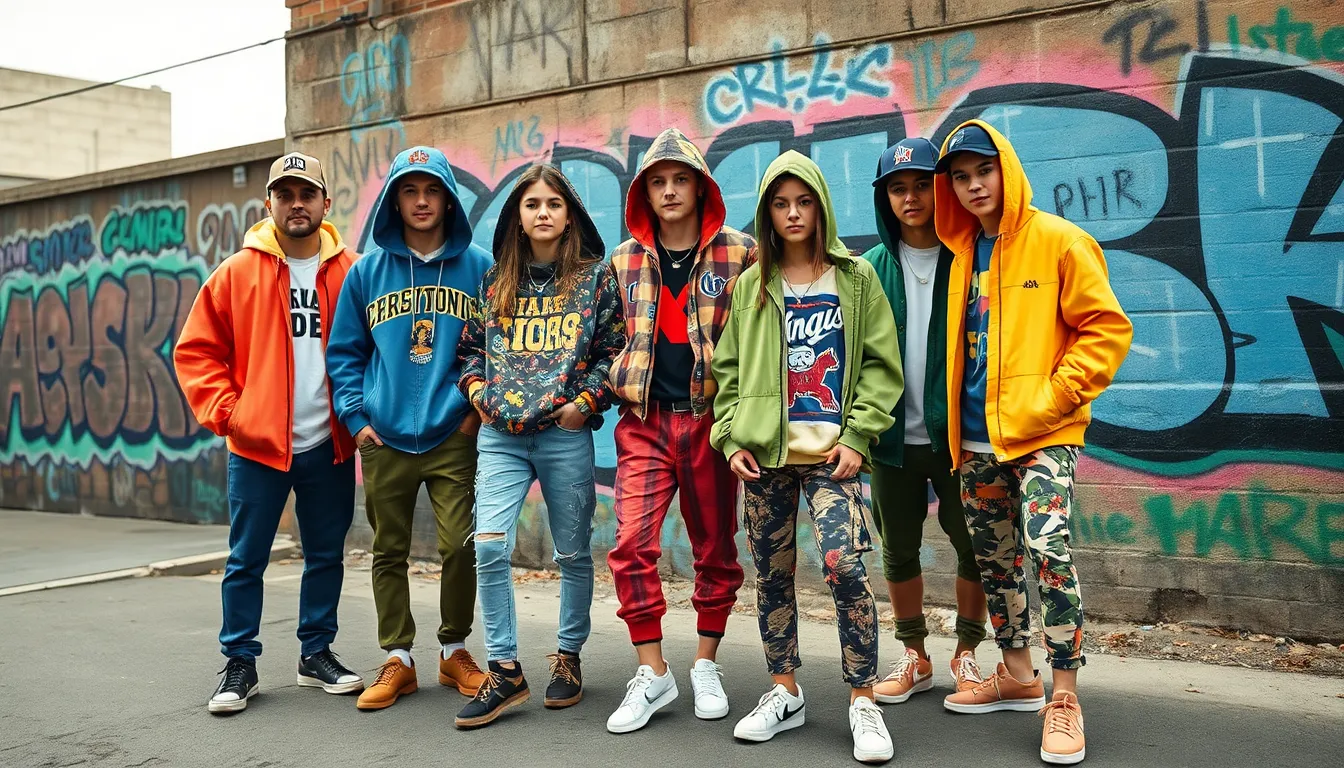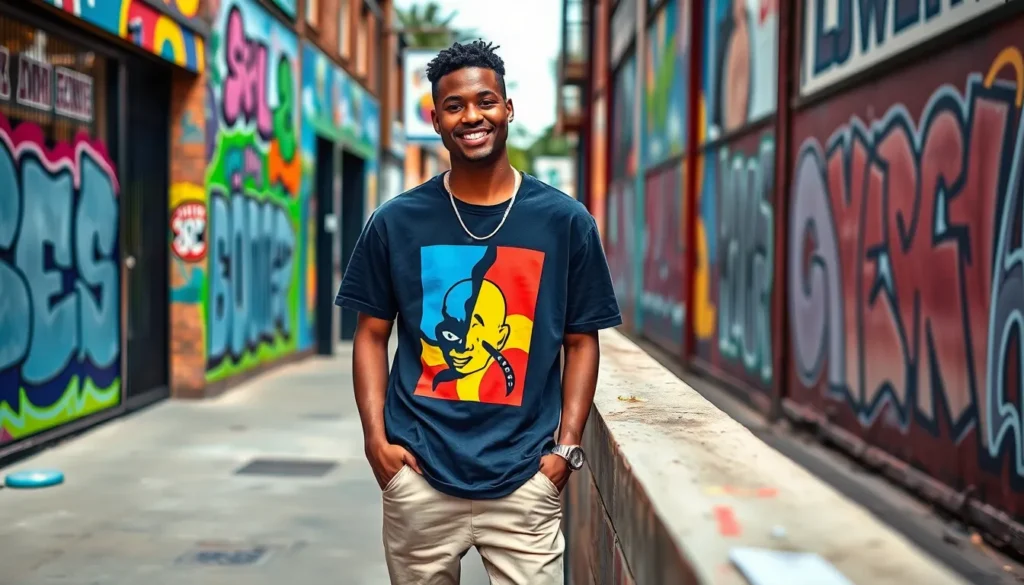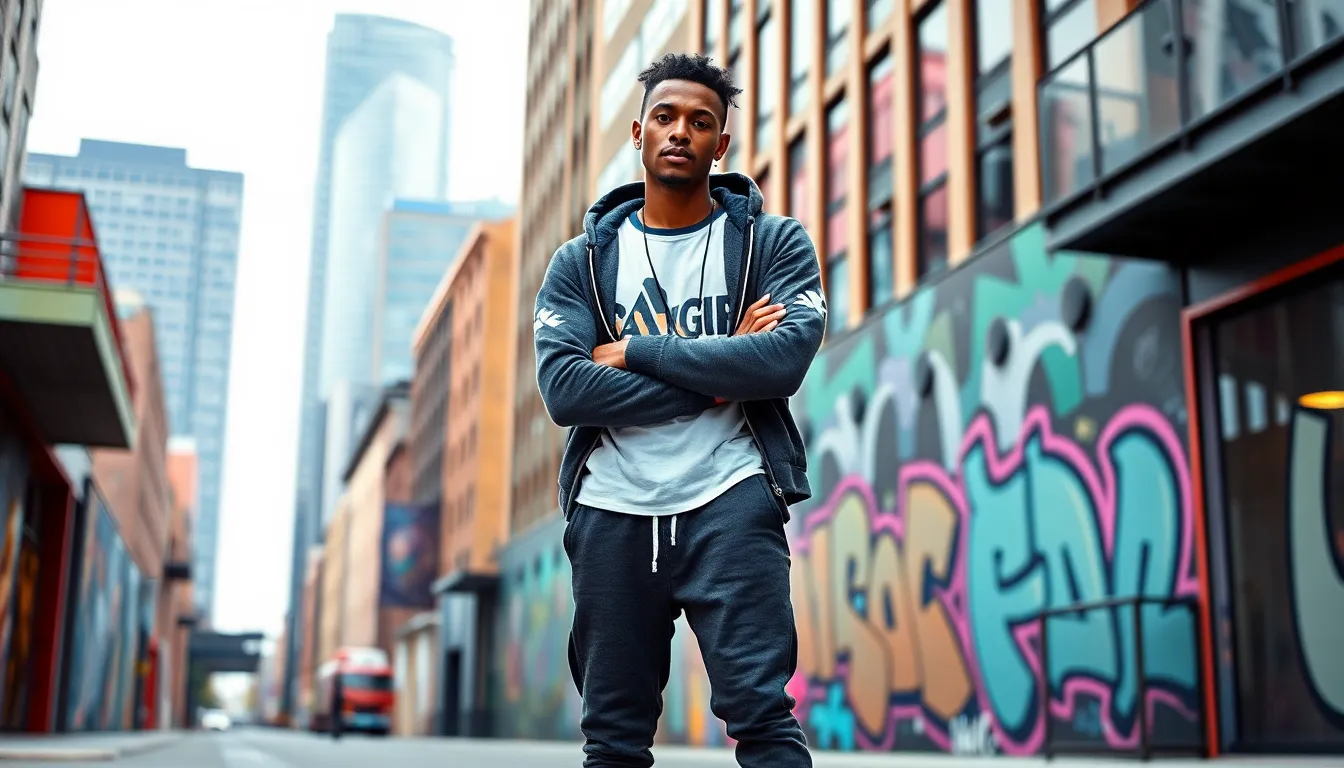Table of Contents
ToggleStreetwear has transformed from a niche subculture into a global fashion phenomenon, influencing not just clothing but also art, music, and lifestyle. Its roots in skate and hip-hop culture have paved the way for a fresh aesthetic that resonates with youth around the world. Brands like Supreme and Off-White have become household names, driving trends that reflect individuality and self-expression.
The impact of streetwear extends beyond just apparel. It shapes social dynamics and fosters community through collaborations and limited releases. As designers and influencers embrace this style, the lines between high fashion and casual wear blur, creating a new landscape where creativity knows no bounds. Understanding this influence reveals how streetwear has redefined modern culture and continues to evolve in exciting ways.
Understanding Streetwear Influence
Streetwear’s influence spans multiple domains, shaping not only fashion but also music, art, and social dynamics. Its roots and characteristics play a crucial role in this cross-cultural phenomenon.
Historical Context
Streetwear originated in the late 1970s and early 1980s, primarily influenced by skate culture and hip-hop music. Pioneering figures like Shawn Stüssy began creating clothing that reflected urban lifestyle and individual expression. By the 1990s, brands such as Supreme emerged, capturing the attention of youth subcultures and setting the stage for streetwear’s expansion. This trend gained traction as celebrities and musicians adopted streetwear, paving the way for its mainstream acceptance in the early 2000s.
Key Characteristics
Streetwear features distinct elements that define its aesthetic and cultural significance, including:
- Casual Aesthetic: Comfort and practicality dominate streetwear design, blending functionality with iconic branding.
- Graphic T-Shirts: Bold graphics and logos serve as statements, often reflecting social issues or personal identity.
- Hyped Collaborations: Collaborations between brands and artists create limited-edition items, enhancing exclusivity and desirability.
- Layered Styles: Mixing and matching different clothing styles is common, allowing individuals to showcase personal style.
- Bold Footwear: Sneakers often complement outfits, with brands like Nike and Adidas leading in design and cultural impact.
By merging these characteristics with its historical roots, streetwear cultivates a unique identity that resonates across cultures and generations.
Cultural Impact of Streetwear Influence

Streetwear has significantly influenced various cultural domains, shaping music and art alongside fashion. Its integration into these spheres highlights the cultural dialogue between streetwear and creative expression.
Music and Streetwear
Music and streetwear share a symbiotic relationship that amplifies their cultural impact. Hip-hop artists like Kanye West and Travis Scott often showcase streetwear brands in their music videos and public appearances, solidifying the connection between music and fashion. Live performances and album covers frequently feature artists in iconic streetwear pieces, further embedding these styles within their visual identity. Collaborations between musicians and brands, such as Travis Scott’s partnership with Nike, drive hype and anticipation while expanding streetwear’s reach beyond traditional audiences. Events like concerts and festivals highlight this influence, as attendees often prioritize outfits as expressions of personal style and cultural affiliation.
Art and Streetwear
Streetwear intersects with contemporary art, creating a dynamic cultural exchange. Artists like KAWS and Shepard Fairey use streetwear as a canvas to reach wider audiences, infusing fashion with their artistic philosophies. Collaborations between artists and brands, such as Off-White x Takashi Murakami, exemplify how art influences design and vice versa. Limited edition drops often feature exclusive artworks, enhancing their collectible appeal. Streetwear brands also support street art initiatives, fostering creativity in urban settings and promoting artistic expression. This relationship enriches both streets and art scenes, making them more accessible and relevant to today’s generation.
Streetwear Influence on Fashion Industry
Streetwear significantly shapes the fashion industry, creating waves across various segments through its unique trends and cultural ties. The impact of streetwear extends beyond clothing, influencing lifestyle and consumer behavior.
Major Brands to Watch
- Supreme: Originating in 1994, Supreme catapulted streetwear into the mainstream with its exclusive drops and collaborations. Its distinctive logo and limited-edition releases attract collectors and fashion enthusiasts.
- Off-White: Founded by Virgil Abloh in 2012, Off-White blends streetwear with luxury fashion. The brand’s signature industrial design elements and quotation marks challenge conventional fashion narratives.
- Palace: This UK-based brand merges skate culture with bold graphics, capturing attention with its vibrant designs and distinctive triangle logo. It appeals to a youthful audience and competes directly with other streetwear giants.
- Fear of God: Launched by Jerry Lorenzo in 2013, Fear of God emphasizes elevated basics and layering techniques, appealing to a high-fashion audience with its understated aesthetic.
- A Bathing Ape (BAPE): Established in 1993, BAPE remains influential with its iconic camo patterns and pop culture references. Its collaborations with major brands and artists keep it relevant in today’s market.
Collaborations and Partnerships
- Travis Scott x Nike: This collaboration features limited-edition sneakers, blending streetwear with mainstream sportswear. It enhances both brands’ visibility and solidifies connections to hip-hop culture.
- Virgil Abloh x IKEA: This unexpected partnership brought streetwear aesthetics to home goods, creating buzz and accessibility for younger consumers looking to personalize their spaces.
- Supreme x Louis Vuitton: This groundbreaking collaboration merged high fashion with street culture, elevating the status of streetwear in the luxury market and attracting diverse audiences.
- Adidas x Beyoncé’s Ivy Park: This partnership exemplifies the power of celebrity influence within streetwear, combining athletic wear with high-fashion elements to create a distinctive identity.
- Kanye West x Yeezy: Through his collaboration with Adidas, Kanye West transformed the sneaker market, creating striking designs that appeal to both streetwear fans and high-fashion consumers alike.
Social Media and Streetwear Influence
Social media significantly shapes streetwear influence, providing a platform for brands, influencers, and enthusiasts to connect and share styles. The immediacy and broad reach of social platforms amplify streetwear’s visibility, driving trends and engagement.
Role of Influencers
Influencers play a pivotal role in streetwear by curating styles and shaping public perception. They promote brands through posts, stories, and collaborations, impacting purchasing decisions among their followers. Influencers like A$AP Rocky and Bella Hadid showcase outfits that blend high fashion with streetwear, expanding brand visibility. Social media platforms such as Instagram and TikTok facilitate this exchange, highlighting unique styles and fostering engagement through hashtags and challenges. Influencers not only elevate brand recognition but also establish authenticity, bridging the gap between street culture and mainstream fashion.
Online Communities
Online communities foster connections among streetwear enthusiasts, encouraging shared experiences and collective identity. Platforms like Reddit, Discord, and Facebook host groups where members discuss releases, trade items, and share styling tips. These communities enable users to stay informed about drops and collaborate on limited editions. Participation in these forums often builds loyalty toward specific brands and cultivates a sense of belonging. Such interactive spaces enhance streetwear culture by emphasizing collaboration, education, and creativity, creating an ecosystem that thrives on shared passion and enthusiasm.
Streetwear Influence on Sustainability
Streetwear’s evolution extends beyond aesthetic appeal; it significantly impacts sustainability within the fashion industry. As awareness of environmental issues rises, streetwear brands adopt various strategies to address ethical concerns and promote sustainable practices.
Ethical Considerations
Ethical considerations become paramount as streetwear continues to grow. Many brands prioritize fair labor practices, ensuring that workers in factories receive fair wages and safe working conditions. For instance, brands like Patagonia emphasize ethical sourcing and transparency, aligning their business models with consumers’ increasing desire for socially responsible products. Streetwear also challenges fast fashion by promoting quality over quantity, encouraging consumers to invest in durable items rather than disposable trends.
Sustainable Practices
Sustainable practices within streetwear are evident through materials and production methods. Some brands utilize organic cotton, recycled materials, and eco-friendly dyes to minimize environmental impact. For example, Yeezy, founded by Kanye West, incorporates sustainable materials into its footwear line, reducing waste while maintaining style. Additionally, limited releases and collaborations often focus on upcycling or repurposing materials, further contributing to sustainability efforts. Brands increasingly adopt circular fashion principles, encouraging consumers to recycle or resell items, which fosters a more sustainable consumption model.
Streetwear has undeniably transformed the landscape of modern fashion and culture. Its roots in urban lifestyle and music have created a dynamic interplay between style and self-expression. As brands continue to innovate and collaborate the influence of streetwear will only grow stronger.
The movement fosters community and encourages creativity while addressing important issues like sustainability. With its ability to adapt and resonate across diverse audiences streetwear isn’t just a trend; it’s a lasting cultural force. As it evolves the future of streetwear promises to be just as impactful and exciting.



